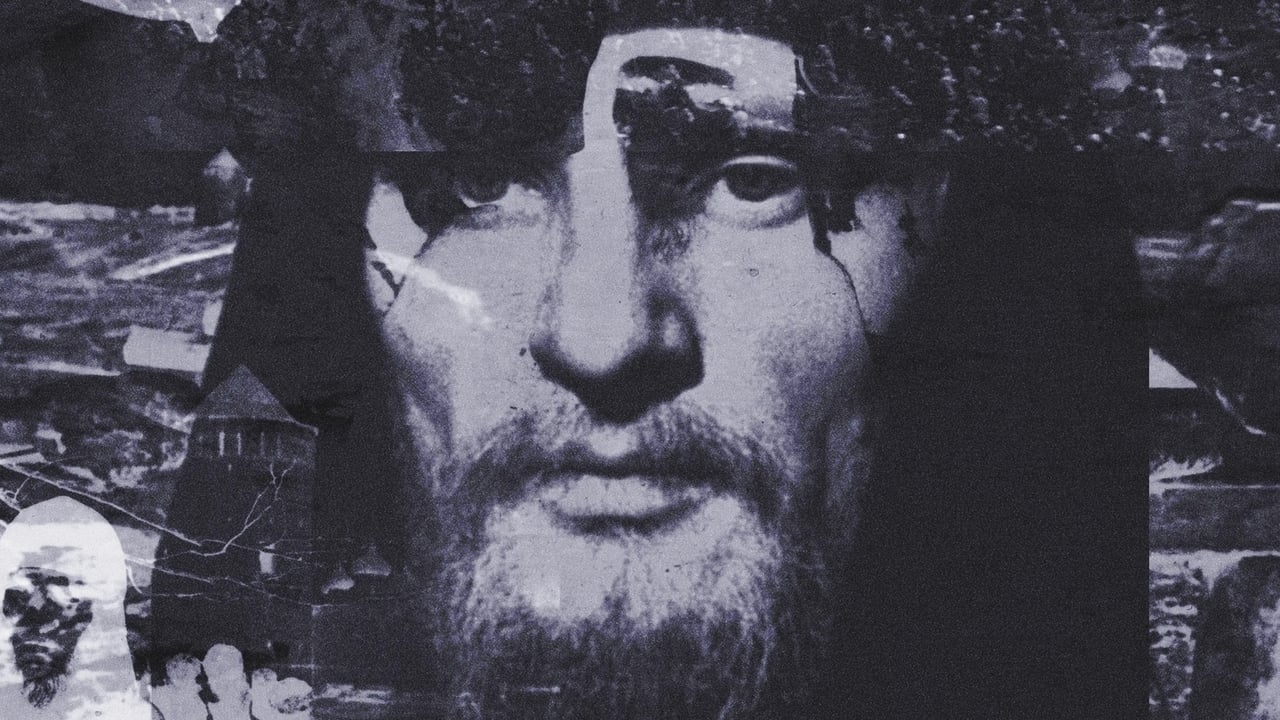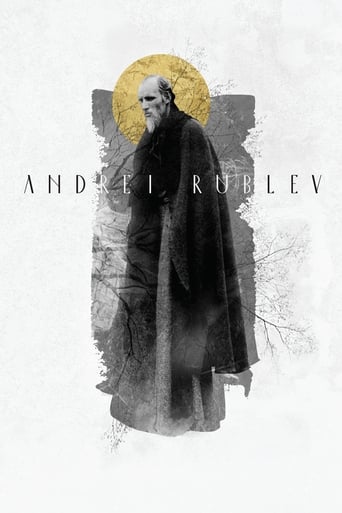

Good start, but then it gets ruined
... View Morea film so unique, intoxicating and bizarre that it not only demands another viewing, but is also forgivable as a satirical comedy where the jokes eventually take the back seat.
... View MoreIf you're interested in the topic at hand, you should just watch it and judge yourself because the reviews have gone very biased by people that didn't even watch it and just hate (or love) the creator. I liked it, it was well written, narrated, and directed and it was about a topic that interests me.
... View MoreIt's a movie as timely as it is provocative and amazingly, for much of its running time, it is weirdly funny.
... View MoreAndrei Rublev is a celebrated 15th century Russian icon painter. This is a series of vignettes related to his biography. Honestly, I wouldn't have watched it if not for its inclusion in the top 250 list. It's definitely an academic necessity for any film fans. The first part has an adventurer test riding a hot air balloon while a superstitious mob rush to stop him. It's surreal and sets the tone of this movie as an ongoing tragedy. The second part is just as tragic. Andrei and his friends are traveling. They take shelter in a village where they are entertained by a jester. Soldiers arrest him for his dissident material. The third part is where I faded. While the first two parts laid down the tone, it doesn't explain our main characters. By the third part, I lose the thread to these characters. I'm not connecting with them. The movie gets epic in part five. It's definitely big and I think a horse gets killed for real. There are some eye-opening scenes and true devastation. Overall, this movie gives a general feel of the era. It lays out the never-ending Russian tragic sensibility. The missing part is that I lose the characters. I don't feel for them. If Russian cinema is your thing, this one is a must.
... View MoreThis was my second attempt at viewing the movie. I made about an hour into it the first time and turned it off out of sheer boredom. This second go round was no different, but in a concession to my stricture about watching an entire film in order to review and rate it, I soldiered on through a number of sittings. Personally, I can appreciate a reviewer like 'Snoopy' on this board who makes a solid case for why the film is considered a masterpiece, but it's not enough to sway me to change my opinion or see something I might have missed in the first place. The picture and story line are somewhat dense, with little continuity among it's chapters, unless one is forced to make a connection. The one concession I'll make is that director Andrei Tarkovsky did provide an epic overview to his work, but that was more than offset by such indefensible scenes that included a burning cow, a horse falling off a set of stairs, and vicious dogs fighting each other for scraps of food. Maybe it's just something about this particular Russian film maker; I found Tarkovsky's 1979 film "Stalker" to be equally tedious and incoherent, the three minute difference in total run time it's only advantage.
... View MoreIt's not a biography by any means, it's largely fiction - it's only loosely based off Rublev's life. The film focuses more on his dedication to Eastern Orthodoxy, as well as its role in his evolution as an artist. There are certain characters that each represent different philosophical outlooks under a single unanimous religious belief. In particular, Theophanes is an interesting take on someone being God-loving yet simultaneously overly cynical in his repulsion by His man's vile nature. Outside of characters, the story is alright. The second half is mostly boring in my opinion. Being shot in black and white to emphasize the colorful ending - no doubt to add "life" to the conclusion - is kind of gimmicky, but otherwise a decent film.
... View MoreRussia have been responsible for some truly fine films, fantasy, animated or otherwise, but Andrei Rublev is truly something special. If there is a Soviet film more visually stunning, powerful, thought-provoking or emotionally profound than Andrei Rublev I've yet to see it. Sure, it may not appeal to all, there have been complaints about the animal torture/killings, the slow pacing and being perplexed by the symbolism but neither were problems for me(but if they are for anybody else that's understandable).Andrei Rublev looks absolutely stunning for starters, not just of any Soviet film but one of the most beautiful-looking films ever, every angle and frame is perfectly composed and with a hypnotic dream-like quality. The film also contains some of the most jaw-dropping and powerful symbolism of all of film, the casting of the bell was the standout with Rublev's colour montage close behind, but the snow crucifixion, the battle and the balloon flight were also memorable images. Tarkovsky's direction is just impeccable, so much so Andrei Rublev for me has to be one of the best-directed films there is. It's very thoughtfully scripted, the hauntingly exquisite music score is not one to forget, the pacing while deliberately slow beguiles rather than bores or frustrates and the story is powerful, inspirational(in how Rublev struggled to overcome the hardships he faces) and poignant. Not only that, but Russian medieval life has never been captured more authentically on film to the extent that the viewer is drawn right into this world, nothing idealistic or overly stylised here, this is compellingly hard-hitting stuff and not in a sadistic way(to me). Anatoli Solonitsyn commands the screen in the title role with vigour and emotional intensity while Irina Tarkovskaya is like a Russian Giulietta Masina(a regular Federico Fellini leading lady if you're not sure), and that's meant in a good way.Overall, majestic cinema(a phrase I very rarely use) and a film that film buffs must see if they haven't already. A very easy 10/10. Bethany Cox
... View More